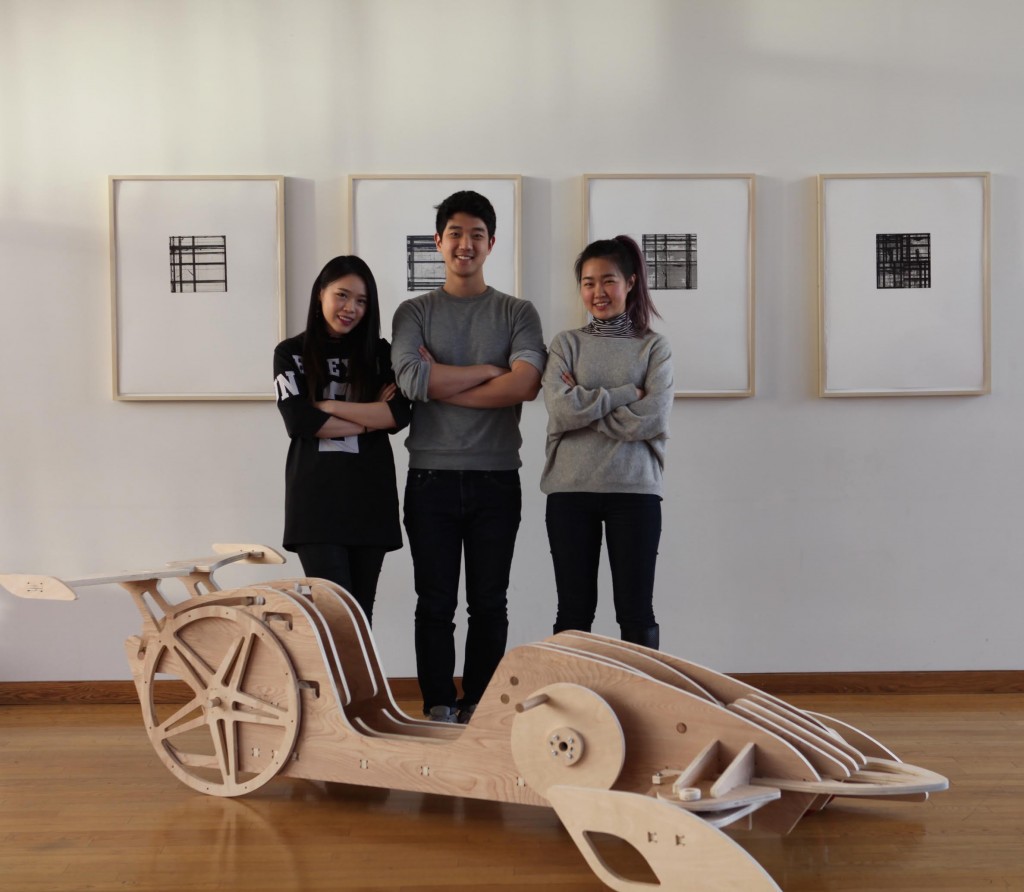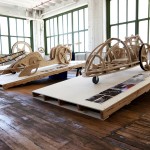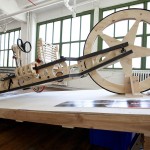Human Powered Vehicle Projects in Arts Thread


Product Design students Ting Hua Chen (Tina), Jaeseong Yi, and Juwon Buhn with their human-powered vehicle, Mouse.
Arts Thread recently featured the human-powered vehicles created as part of SCE faculty member Dave Marin’s Prototypes 3 course. In this studio, product design students were asked to design and make prototypes of “fun” vehicles for children at full adult scale. All students used CNC technology for the primary fabrication method. Students on the course were: Ting Hua Chen (Tina), Jaeseong Yi, Juwon Buhn, Peter Zweifel, Gabrielle Zelepos, Yingying Yang, Adrian Kwak, Yu Rong, Jasmine Yuen, Russell Kirk. The vehicles were exhibited at Industry City as part of NYCxDesign in May.
Students tested various different methods of human-powered movement, examining paddle boats, tricycles, rowing machines, and railroad pump cars. During the course, the groups built models and mockups of the different components that would eventually form their final product.
Projects included the Racer,which borrowed from Forumula 1 vehicles, with aerodynamic form. This example included rack and pinion steering, rear wheel drive, with features of an adjustable seat and back to accommodate size variance, a steering column that moves and fits around the driver and a movable rear “door” that allows access to the “engine”.’
The team that created the Monster sought inspiration in the mechanics of a rowing machine. ‘The seat glides on a roller structure and the movement of the seat turns the drive chain. Using the reference of the Chitty Chitty Bang Bang car the group worked toward a vehicle that created an image of eccentricity commanding attention. Their prototype includes a rack and pinion steering system with a steering column that moves with the driver as their movement drives the vehicle forward.’
The third vehicle, Mouse, is controlled through arm motions.’The front wheel of the vehicle is used as a pivot point with each of the rear wheels being individually powered. The prototype’s steering is controlled by the rotation of each wheel allowing a narrow turning radius and deriving motion from the references of a traditional wheelchair and railroad pump cars.’ (Source: Arts Thread)
- Human Powered Vehicles: Monster, Racer, and Mouse
- Monster

